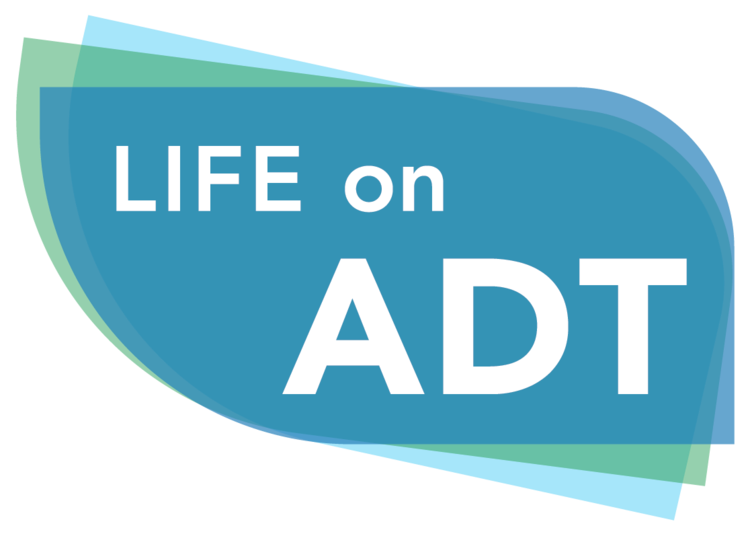Physical Side Effects
The following clips accompany the section on physical side effects. You may find it helpful to hear from other patients about their experience of particular side effects and how they adjusted to them.
Bruce describes what it has been like for him to be on ADT and to experience some of the changes in his body including: body hair loss, weight gain, and loss of sexual interest and function.
Don talks about how he has less strength and stamina to keep up with chores and tasks than he used to. Kathleen has taken on the responsibility for some of these tasks. He notes other physical changes like hot flashes, and loss of body hair.
Abby and Darcy talk about the benefits of participating in the ADT Educational Program. Abby started on ADT before the ADT Educational Program was available. They were given information by their medical team when Abby started on ADT, but were too overwhelmed at that time to take in all the information. Later Abby searched for information on the internet, but found what he read there upsetting. After being on ADT for some time, they got the ADT book that this online program is based on—“Androgen Deprivation Therapy: An essential guide for men with prostate cancer and their loved ones”. Both Abby and Darcy were grateful to have a source of information they can trust and refer to for guidance.
Bruce talks about how, when he chooses to actively manage ADT side effects (e.g., hot flashes) his life is less stressful.
Abby and Darcy talk about how they dealt with his hot flashes.
Hear Bruce talk about how he adjusted to having less stamina. He describes how he wasn’t able to umpire several top level (e.g., ‘A level’) slow pitch baseball games the way he was prior to ADT. Rather than give up umpiring altogether, he made some adjustments. He decided to limit the number of consecutive A- level games he umpired and on some occasions he chose to umpire at a less competitive level of baseball (e.g., ‘B-level’).
Exercise and nutrition are two ways to manage the physical side effects described above. If you haven’t already integrated exercise or healthy eating habits into your lifestyle, it may be helpful to hear from other patients about the changes they made.
Exercise
Abby found that he was putting on weight so he decided to join a gym. Unfortunately, he found that his joints couldn’t handle a gym workout because of flare-ups of past injuries (e.g., shoulder pain). Rather than give up on being physically active, he took on other activities like yoga, biking, walking, and using a treadmill. Keeping physically active is now something that Abby and Darcy did together.
Bruce explains how he discovered that exercise actually gave him more energy.
Healthy Eating
Don and Kathleen talk about their experience in the ADT Educational Program. While they learned about ADT in their consult with Don’s physician, they still appreciated the ADT Educational Program. After the program, they took a proactive approach to dealing with the changes caused by ADT and reduced the amount of meat they ate. We recommend reducing red meat (e.g. beef and pork) when on ADT, and replacing it with fish, poultry and other vegetable sources for protein, like beans and lentils. Changing his diet and exercising more, did not come easily for Don, but with Kathleen’s encouragement he adapted. He took up regularly walking because he learned it was important to help prevent fatigue.









